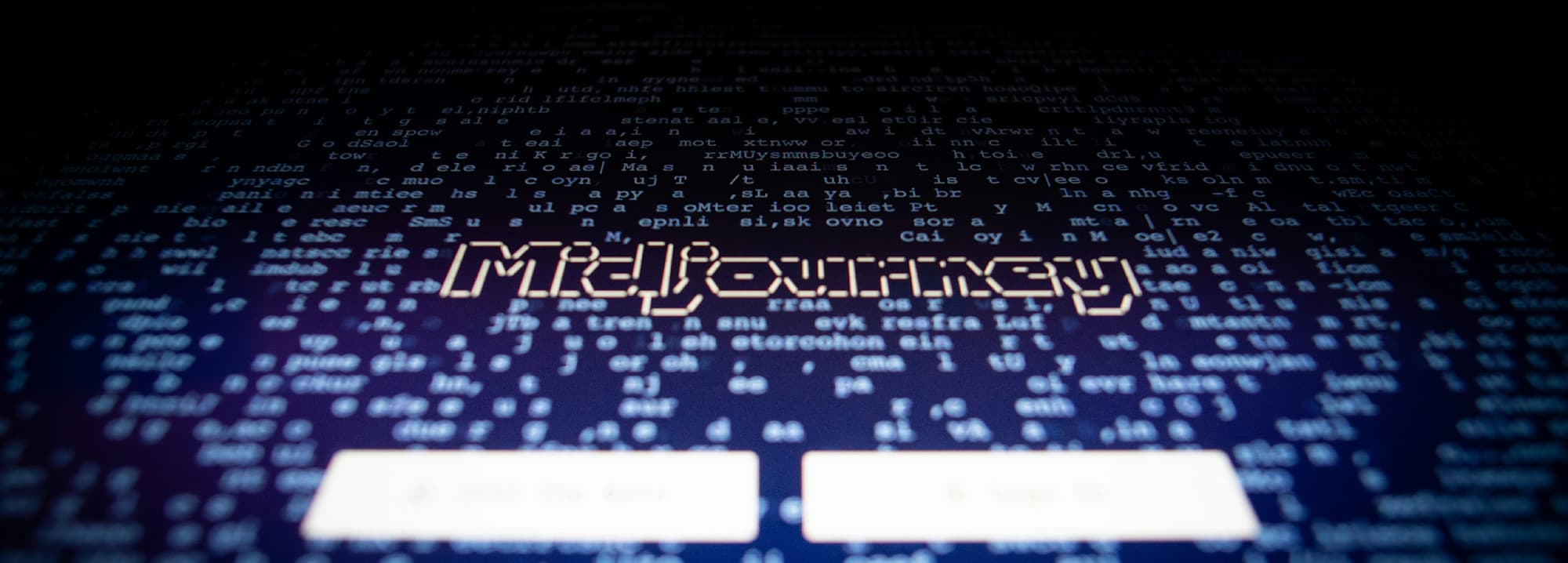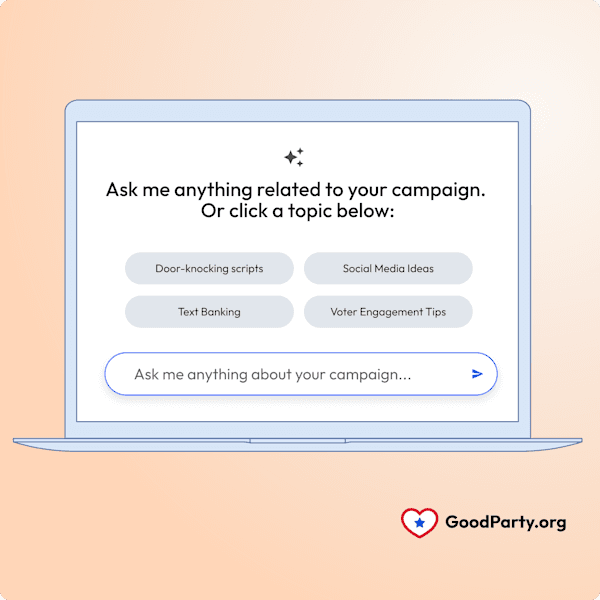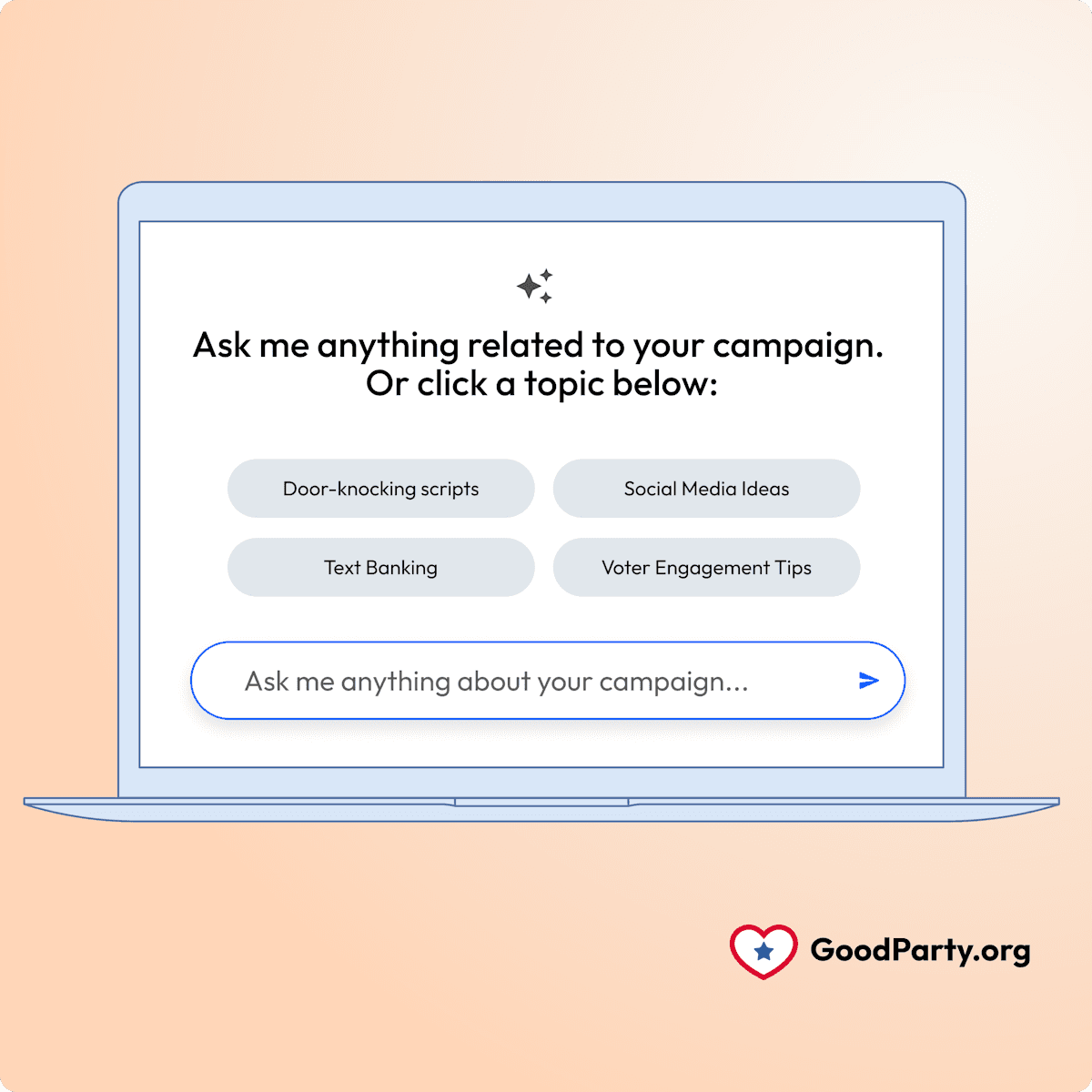
AI in Politics: How Tech Is Reshaping Democracy
In January 2024, thousands of voters got a robocall with President Joe Biden’s voice telling them to stay home from the primary elections. The problem is, it wasn’t Biden at all. It was a deepfake, created with artificial intelligence. One side of AI in politics looks like this: misleading robocalls, fake videos, and divisive memes, fueling distrust and misinformation.
At the same time, AI is giving grassroots and Independent candidates the power to compete with and defeat better-funded, major-party politicians. Even once in office, AI can help local elected officials engage with constituents more authentically, and it’s giving citizens the power to grow their civic knowledge, decode jargon-heavy bills, and get involved in their local governments.
This is the new reality of AI in politics, and love it or hate it, AI is here to stay. The question is whether we’ll use it to strengthen democracy or undermine it.
What Is AI in Politics?
When we talk about AI in politics, we’re not just talking about flashy Midjourney-generated campaign ads or ChatGPT-written memes.
Artificial intelligence is already shaping how elections are run, how governments operate, and how citizens interact with democracy itself. Its reach extends from the campaign trail to the halls of power and into the everyday lives of voters.
AI shows up in politics in several ways:
Elections and Campaigns: Candidates and political organizations are among the earliest adopters of AI tools, using them to generate social media posts, run chatbots and AI assistants, analyze voter data, and optimize fundraising. Together, these tools let campaigns run leaner, faster, and cheaper.
Governing and Public Policy: Once in office, elected officials are using these same technologies to govern more effectively. For instance, politicians can use AI tools to sort and respond to constituent messages, translate complex policy language into plain English, and gather and analyze feedback to guide decision-making.
Civic Life and Public Discourse: Even outside of campaigns and government, AI is influencing how citizens and communities experience democracy. It’s shaping what information reaches people and how they engage with it. AI is being used to generate political articles and memes, track donations and lobbying activity, fact-check claims, and reword ballot measures and policies. AI can put more political power directly in the hands of citizens, but it can also change how public conversations unfold, amplifying some voices while muting others.
AI’s power makes it useful in many situations, but it also makes it ripe for abuse. From deepfake robocalls, to algorithms that reinforce existing biases and leave marginalized voices out of the conversation, AI is directly contributing to a growing erosion of faith in democracy as people struggle to tell what’s real and what’s fabricated.
While these risks don’t cancel out AI’s potential, they do make clear that how we use this technology matters just as much as the technology itself.
How AI Can Strengthen Democracy
The most overlooked side of AI in politics is the way it can actually strengthen democracy. For decades, running for office has been expensive and inaccessible, favoring career politicians backed by major parties and wealthy donors. AI is starting to change that by lowering costs, saving time, and making it possible for more diverse voices to compete. It’s also expanding citizens’ access to and understanding of political processes.
Some of the most crucial ways AI is helping improve and strengthen democracy include:
#1: Cutting Costs and Saving Time
Campaigns are notoriously expensive and time-consuming, but AI can reduce the price tag and time investment dramatically. Instead of paying for consultants or doing everything yourself, candidates can now generate content, analyze data, and do deep research in minutes.
Some of the biggest ways campaigns are already using AI to save time and money include:
Content Creation: AI design and content generation tools can produce graphics, mailers, email copy, and videos without hiring outside vendors or spending hours agonizing over subject lines.
Automating Outreach: AI-driven tools can handle scheduling emails, sending texts, and posting on social platforms so staff don’t have to do it manually.
Speechwriting and Copy: Large language models help draft press releases, email blasts, political speeches, and talking points.
Ad Production and Management: AI voice and video tools can generate low-cost campaign ads that look polished without studio budgets. It can also optimize digital ad placements and track performance reports.
Inbox Triage: Campaigns can use AI to categorize voter and constituent messages, flag urgent issues, and draft replies.
Data Entry and Admin: Automating repetitive tasks like donor tracking or event scheduling reduces the need for paid staff hours.
Research and Prep: AI can summarize news, opposition research, or policy documents, cutting down on the time consultants would normally bill for.
By trimming these overhead costs, campaigns can redirect scarce resources toward the work AI can’t do, like connecting with voters face-to-face. For Independents and grassroots candidates, that can mean the difference between having a voice and being priced out of the race.
#2: Expanding Access to Data and Strategy
Until recently, sophisticated voter targeting and analytics were luxuries reserved for major-party or well-funded campaigns. Now, AI-powered voter insights make it possible for Independents and third-party candidates to effectively use voter data to their advantage.
Campaigns are beginning to rely on AI for strategy in several key ways:
Voter Modeling: Predicting turnout likelihood and identifying persuadable voters without paying for expensive data consultants.
Message Testing: Using AI to A/B test language and visuals quickly, seeing what resonates with different audiences.
Geographic Targeting: Pinpointing neighborhoods or precincts where outreach will have the greatest impact.
Sentiment Analysis: Tracking voter conversations online to identify emerging concerns or misinformation trends.
Chatbots for Feedback: Engaging voters directly to learn what issues they care about most, then feeding those insights back into the campaign.
Platforms like GoodParty.org are already making AI-powered tools accessible for Independents and grassroots candidates, giving them access to professional-grade analytics and strategy. Tools and platforms like this help to close the gap between outsiders and the two-party establishment.
A 2024 survey by the Center for Campaign Innovation found that more than one-third of political professionals had experimented with AI tools in campaigns, underscoring how quickly these technologies are becoming mainstream in strategy and outreach.
LEARN MORE: Explore how you can use voter data strategically to power your campaign.
#3: Bridging the Gap in Governance
AI isn’t just being adapted for campaigning. It’s also beginning to reshape how governments serve their constituents.
In a 2024 ICMA survey of local government officials, 55% identified resident engagement as the top area for AI’s potential, especially through chatbots and streamlined service delivery. That means public servants themselves see AI less as a gimmick and more as a way to improve day-to-day communication with citizens.
Common uses for AI in local government offices include:
Community Feedback Analysis: Scanning survey responses or meeting notes to spot recurring concerns.
Sorting and Routing Messages: Making sure constituent concerns are sent to the right department quickly.
Summarizing Policy Changes: Boiling down lengthy reports or ordinances into clear takeaways.
Plain-Language Translation: Converting jargon-heavy legal or budget documents into everyday English.
AI tools can save time for government staff and help close the gap between citizens and their leaders. By making information easier to access and feedback easier to process, AI has the potential to make government feel more responsive, transparent, and accountable.
Internationally, governments are experimenting too. In Albania, Prime Minister Edi Rama even appointed an AI-generated “minister” to oversee aspects of governance, while Ukraine introduced an AI spokesperson to deliver official communications. These moves highlight the potential for efficiency despite the general unease of putting official statements in AI’s voice.
#4: Strengthening Civic Education
Perhaps one of the most exciting possibilities is the way AI can empower voters themselves. Complex ballot measures, zoning policies, or budget documents are often full of jargon that discourages civic engagement. AI can cut through that complexity and make politics more approachable for everyday citizens.
Already, AI can be used to:
Break Down Ballot Measures: Summarizing key points so voters know what a “yes” or “no” vote really means.
Simplify Policies and Budgets: Translating dense legislative or financial documents into plain language.
Fact-Check Political Claims: Flagging misinformation and giving voters context in real time.
Guide Civic Learning: Acting as a personal tutor on how government processes work or what different elected offices do.
Over time, this could add up to a better-informed electorate that feels confident engaging in politics beyond just casting a ballot on election day. By lowering the barrier to understanding, AI has the potential to turn passive observers into active participants in democracy.
LEARN MORE: Start building your civic knowledge with our beginner-friendly guide to politics.
AI in politics will always carry risks, but its potential for good is real. From lowering the financial barrier to candidacy to helping governments communicate more clearly to giving voters the information they need to participate confidently, AI has the power to bring more people into the democratic process. The challenge now is making sure these benefits outweigh the risks and that this technology is used to strengthen democracy rather than undermine it.
The Risks of AI in Politics
For every story about AI helping grassroots candidates compete in elections, there’s another about it being used to spread disinformation or undermine trust. The same qualities that make AI powerful, like speed, scale, and accessibility, also make it easy to weaponize. If left unchecked, these risks could outweigh the benefits.
Spreading Disinformation at Scale
AI can generate convincing fake content in seconds. In January 2024, New Hampshire voters received robocalls with a cloned voice of President Biden telling them not to vote in the primaries. AI-generated photos of Donald Trump surrounded by Black supporters also went viral in 2023, racking up millions of views before fact-checkers caught up.
More recently, Trump posted an AI-generated image of himself dressed as the Pope, which the White House amplified on social channels. While some dismissed it as satire, critics said it blurred the line between humor and disrespect, underscoring how AI images can inject confusion and controversy into politics. Similarly, Trump posted an AI-generated video reimagining war-torn Gaza as a beachfront “Riviera of the Middle East,” complete with luxury resorts and golden statues. The creator called it satire, but its spread without context showed how AI visuals can project misleading political fantasies just as convincingly as disinformation.
LEARN MORE: Explore the difference between misinformation vs. disinformation.
Undermining Public Trust
Even when voters spot fakes, the sheer volume of AI-generated content erodes confidence. A University of Chicago poll found 58% of Americans believed AI would increase misinformation in the 2024 elections, while only 6% thought it would reduce it. Nearly two-thirds of Americans say deepfake robocalls could be convincing enough to sway election results. As campaigns adopt more AI, politics risks becoming an “arms race” of fakes and counter-fakes that leaves voters exhausted and skeptical.
Reinforcing Bias and Inequality
AI systems learn from existing data, which often reflects inequities.
That means:
Predictive voter models can sideline marginalized communities.
Minority languages and smaller populations are underrepresented in training data.
Wealthier campaigns may still gain faster access to advanced AI tools, widening the gap.
Without safeguards, AI could deepen existing divides instead of closing them.
Threats to Privacy and Security
Campaigns thrive on voter data, and AI thrives on massive datasets.
That creates risks:
Data breaches exposing sensitive voter information.
Hyper-targeted ads that cross the line into manipulation.
Foreign actors cheaply producing convincing AI-generated content to influence U.S. elections.
As campaigns grow more data-hungry, the line between outreach and intrusion will only get blurrier.
These risks aren’t hypothetical. Americans are already seeing deepfake robocalls, fake images, and algorithm-driven polarization in their feeds. A 2024 Talkdesk survey found 55% of voters worried AI would undermine the presidential election. The challenge isn’t whether AI will be part of politics. It already is. The real question is whether we’ll manage its risks in a way that protects trust, privacy, and equity, or allow the technology to become another tool for manipulation.
The Path Forward for AI in Politics
The 2024 and 2025 election cycles have already proven that AI can sway narratives, amplify voices, and alter how campaigns are run. It has made politics both more accessible and more confusing, more democratic and more dangerous.
Looking ahead, AI in politics will only become more sophisticated, with hyper-personalized and microtargeted ads and advanced chatbots that bad actors could exploit to spread misinformation and suppress participation.
To harness AI’s potential without falling victim to its risks, we need three things:
Transparency: Campaigns should disclose when AI is used to generate content. Voters deserve to know what’s authentic.
Regulation: Lawmakers must create clear guardrails to prevent malicious uses like voter suppression, robocalls, or deceptive deepfakes.
Ethical Adoption: Candidates should use AI to enhance democracy, not manipulate it. That means focusing on efficiency, outreach, and accessibility, not deception or fear-mongering.
At GoodParty.org, we believe AI should be used to level the playing field, not tilt it further. That’s why our tools are built with ethics at the core, helping candidates save time and resources while staying transparent and authentic. Our suite of campaign tools are built to empower Independent and grassroots candidates, cut through the noise, and bring real people into the political process.
Because the real promise of AI in politics isn’t flashy ads; it’s using technology to make democracy work better for everyone.
Photo by Jonathan Kemper on Unsplash
Ready to see what’s possible? Explore GoodParty.org’s AI-powered campaign tools today. Let’s put AI to work for the people, not political parties.

